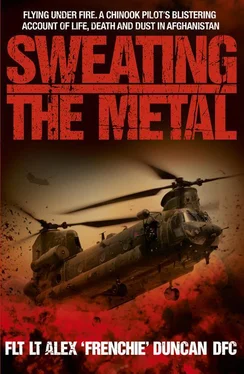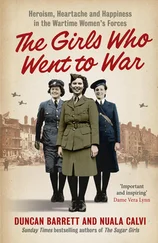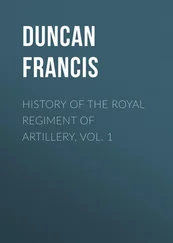A permanent force had been based at Kajaki Dam after 42 Commando launched Operation Volcano in February 2007, clearing a safe zone around the dam and driving the Taliban out of mortar range. The Taliban’s main fortified position in the village of Barikju was cleared without casualties.
Musa Qala, which had been held by the Paras in 2006, had been ceded to local tribal elders in a negotiated truce. The deal was intended to see neither British nor Taliban forces in the town in an effort to reduce conflict and civilian casualties, but the Taliban reneged on the agreement, overrunning the town with as many as 300 troops in February 2007. When we arrived in Helmand it was still under Taliban control. They imposed their own extreme fundamentalist interpretation of Islam, closing down schools, restricting women’s movements, levying heavy taxes, and hanging those inhabitants they suspected of being spies. Men were attacked for not having beards, music was banned and women were beaten for not wearing the burqa.
This was the background against which we arrived; although, aside from being a little bigger and busier, KAF was the same old dusty and annoyingly anal place it had always been. One of the first things I did was head over to the Survival Equipment Specialists to pick up my Mk61 LCJ. In addition to the plate armour on the front of the jacket, it also features a series of horizontal webbing tape loops to which you can attach various items of equipment. Having flown with my sidearm in a thigh holster on my previous Det, I realised it was too restrictive and uncomfortable. With the Mk61, I could strap my weapon and magazines to the front. Our admin and TQs were quickly dispensed with and we were up to speed and flying ops in no time.
My first few sorties were pretty routine admin runs, which are about as ‘everyday’ as life gets in theatre. I was flying with Squadron Leader Morris Oxford, a great guy who’s been on the squadron for years and has a wealth of experience. For someone so seasoned, this was his first Det as a pilot, so he was limited combat ready. That said, he wasn’t exactly green – he’d previously been a Chinook navigator and had been the Qualified Navigation Instructor at the OCF, so he was a safe pair of hands and a great guy to fly with. I liked flying with him because, as the captain, I could concentrate on what I needed, secure in the knowledge that there was nobody better qualified to handle the nav side. For all that, he was a cracking pilot too.
We were blessed with our two rear crewmen who had a lifetime of experience between them: Jim Warner, an affable guy who’s good to have around and knows what he’s doing, and Bob Ruffles. Bob is like everyone’s dad and he’s got over 5,000 hours on Chinooks, so is as useful a crewman as you could ask for.
If the ambient temperature had been hot on my previous Det, this one was off the scale. It’s around 09:00, July 25th and we’re at KAF preparing for the day’s sorties – admin taskings, flying people and cargo all around Helmand Province. We have a series of sorties to fly that will see me add another seven hours flying time to my logbook by the time I shut down the airframe at Bastion this evening, our starting point for the next day’s flying.
Morris has got one of those all-singing, all-dancing Breitling Pilot watches with a thermometer built in. When we get to the cab to do our pre-flight checks, he takes it off and leaves it on the centre console.
‘And today’s forecast for Kandahar is it’s going to be hot!’ I say to Morris, as I walk down the cab and off the ramp to do my walk-around. I pick up my Mk61 jacket and strap it on to me as I’m walking. It’s early but the temperature is already insufferable, a good sign that things can only get more uncomfortable. It takes an average three weeks to acclimatise, so I know it’s going to get a lot worse before it starts getting better.
Back on the cab, I slot a fresh magazine into my SA80 short carbine and strap it to the side of my seat in its allotted place. I’m flying from the right seat today, so I stow my CamelBak on the right side of the cockpit.
It’s a tight cockpit, which makes for some interesting contortions to reach the seats. To access it from the cab, you stoop and walk through what is essentially a narrow corridor, about 2ft long. I stretch my right leg across the seat, behind the cyclic, and find the floor. Then I bend my head so I miss the overhead console and push my body forwards, dragging my left leg and swinging it over the centre console. Hunched over, I can now slide my body down and I’m in the seat.
I grab the centrepiece of the five-point harness, find and connect the two straps that attach to the bottom – one either side – then reach over my shoulders for the top ones. Attach those and I search for the pigtail – the cable that I’ll plug into my helmet that will connect me to the aircraft’s intercom and radio system. I’ll leave my helmet on the centre console for now. I adjust the pedals – there are four settings – I always take the second one from the top. Move my seat forward a notch and then set its height. I adjust it so that I have the perfect picture for a three-degree glide path on the approach, which means that the 120kts marker on the airspeed indicator is just disappearing under the lip at the top of the dial.
I look in the mirror and I can see the crewmen in the back sorting out the cabin. They’re making sure all the equipment is secured and in place, and our personal kit is stored properly. They start putting on their helmets and attaching their pigtails. At that point, I shout, ‘Helmets!’ and reach across to the centre console to pick mine up, securing the chin strap and connecting the pigtail. All conversation from now until the end of the sortie will be via the intercom.
It’s then that I notice Morris’ watch, which is still on the centre console. It’s reading 68°C! Obviously, the vast expanse of glass – there are windows above, in front, to the sides and under our feet in the cockpit – mean we’re in direct sunlight and there’s the greenhouse effect, but even so. There’s no acclimatising to that sort of extreme heat, but you just have to get on with it.
It’s difficult to describe what it feels like. What’s hot? 30°C is enough to make the news during an average English summer; 40–45°C is the average daytime temperature in the UAE during summer and is the reason that all sensible Emiratis abandon the state for cooler climes until autumn. 80°C is the temperature of the average sauna – and you strip naked to sit in one of those. Most people sit in a sauna for five to ten minutes and then take a cold shower. We sit in uniform shirt, trousers and boots, body armour that weighs 15kg, sidearm and spare magazines, helmets and flying gloves. Nothing is easy in Afghanistan; there’s a reason it’s called a ‘hostile environment’ and it’s not all about the bullets.
We run through start-up. Battery on, pressurise and start the Auxiliary Power Unit and then start the number one engine; set the engine control lever to ‘Ground Idle’.
Time to engage the rotors. ‘Clear rotate,’ I say and the reply comes back from Bob, ‘Clear all round.’ The blades start moving and I start counting them to ensure they are at the same interval. One-two-three; all good. They speed up until they’re a blur, beating out their loud, hypnotic rhythm. I advance the throttles and the blades mesh together, working their magic. I bring the generator online and start the number two engine.
Watch the Ts and Ps (Temperatures and Pressures) build. Ts and Ps on both sides are looking good – I’m looking for 100% NR, all good, no captions on the CAP (Caution Advisory Panel) that I can see. Check the gearboxes, fuel pumps are working correctly. That’s after start checks complete. Morris reaches across to the centre console and arms up the self-defence kit, nav kit and radios while I carry out the pre-taxi checks.
Читать дальше













